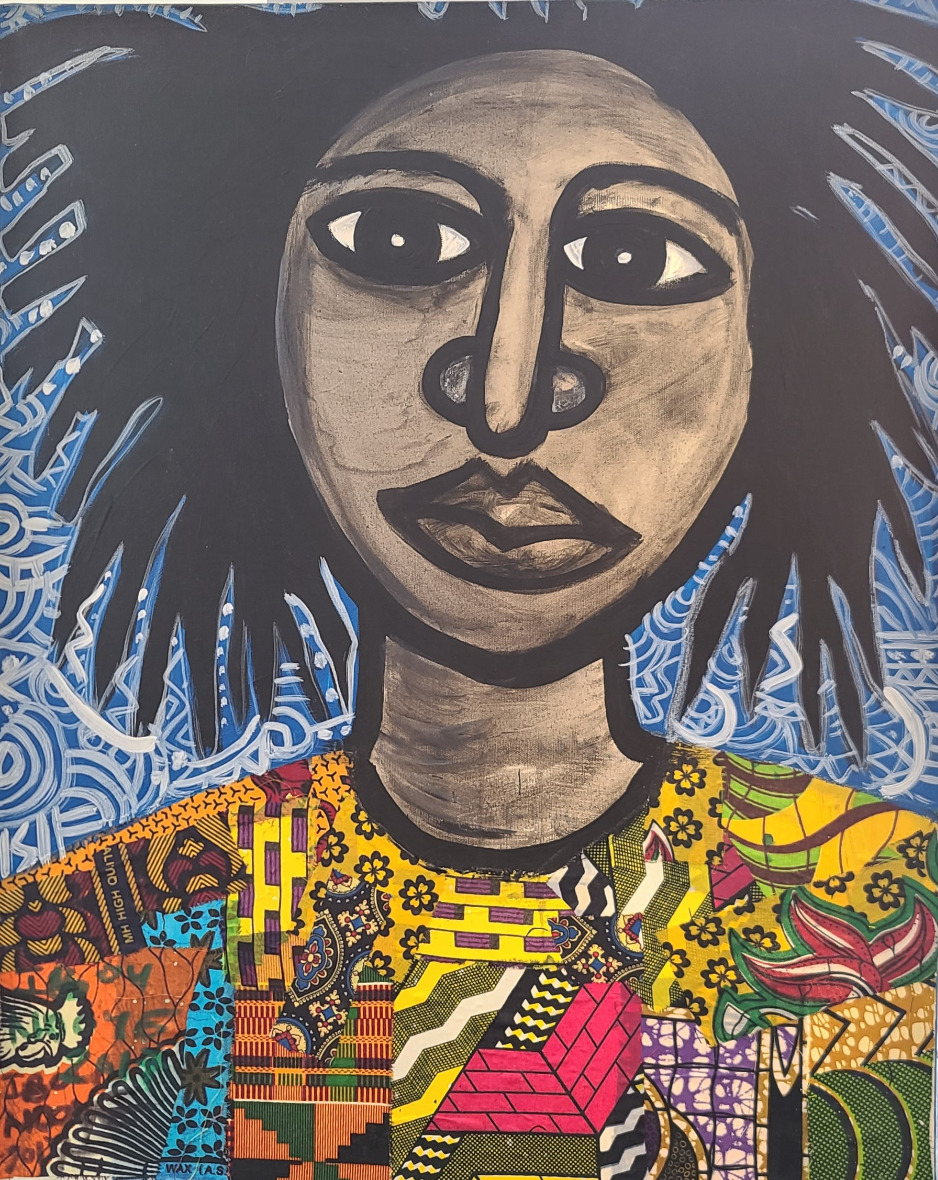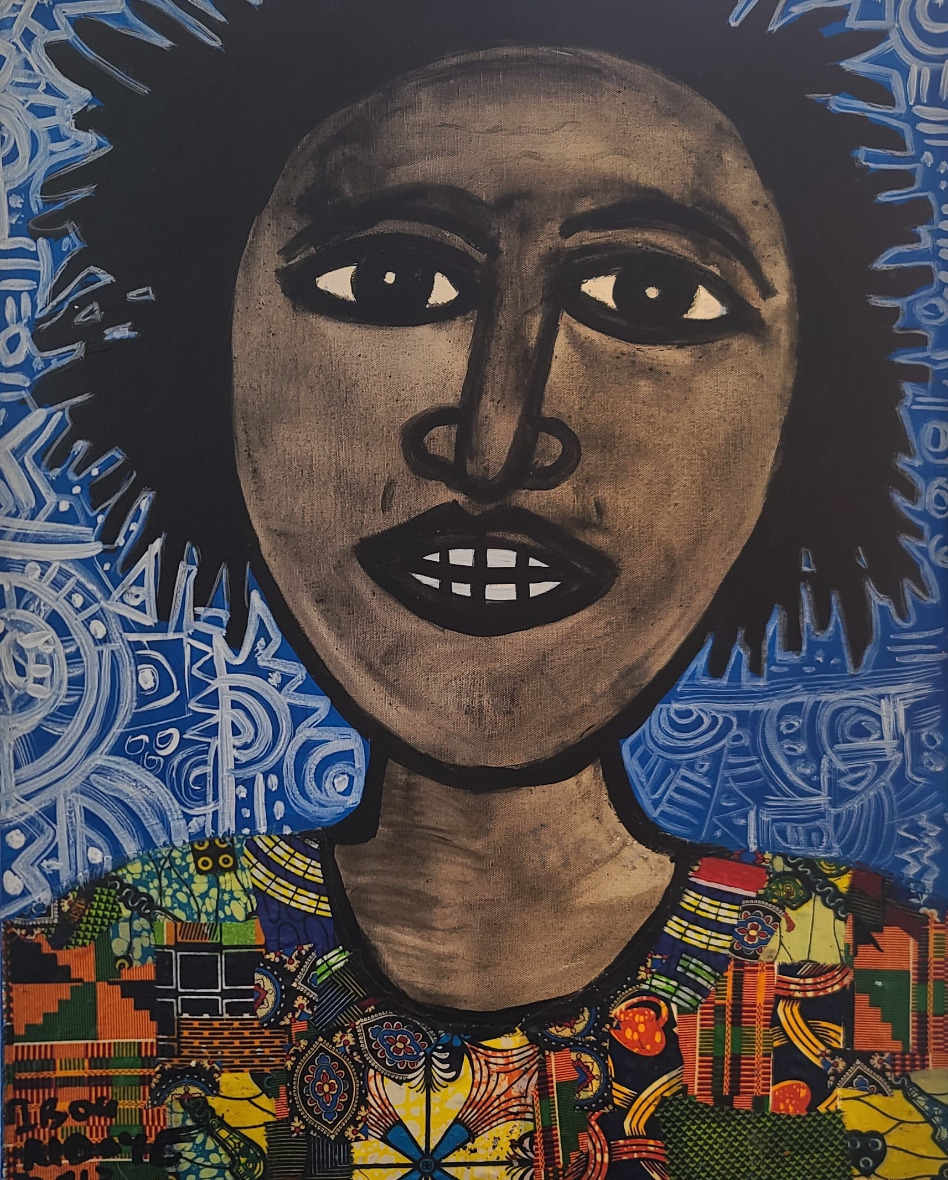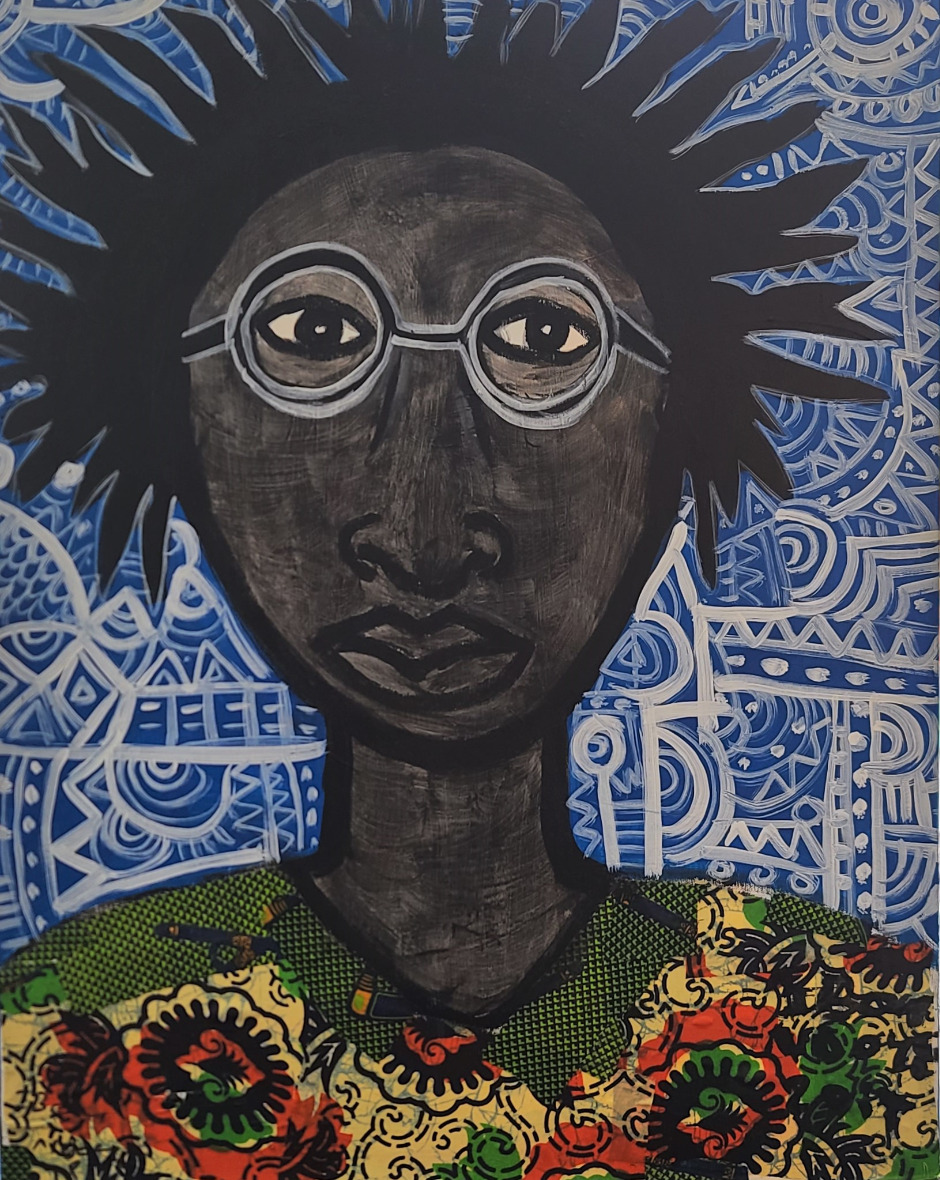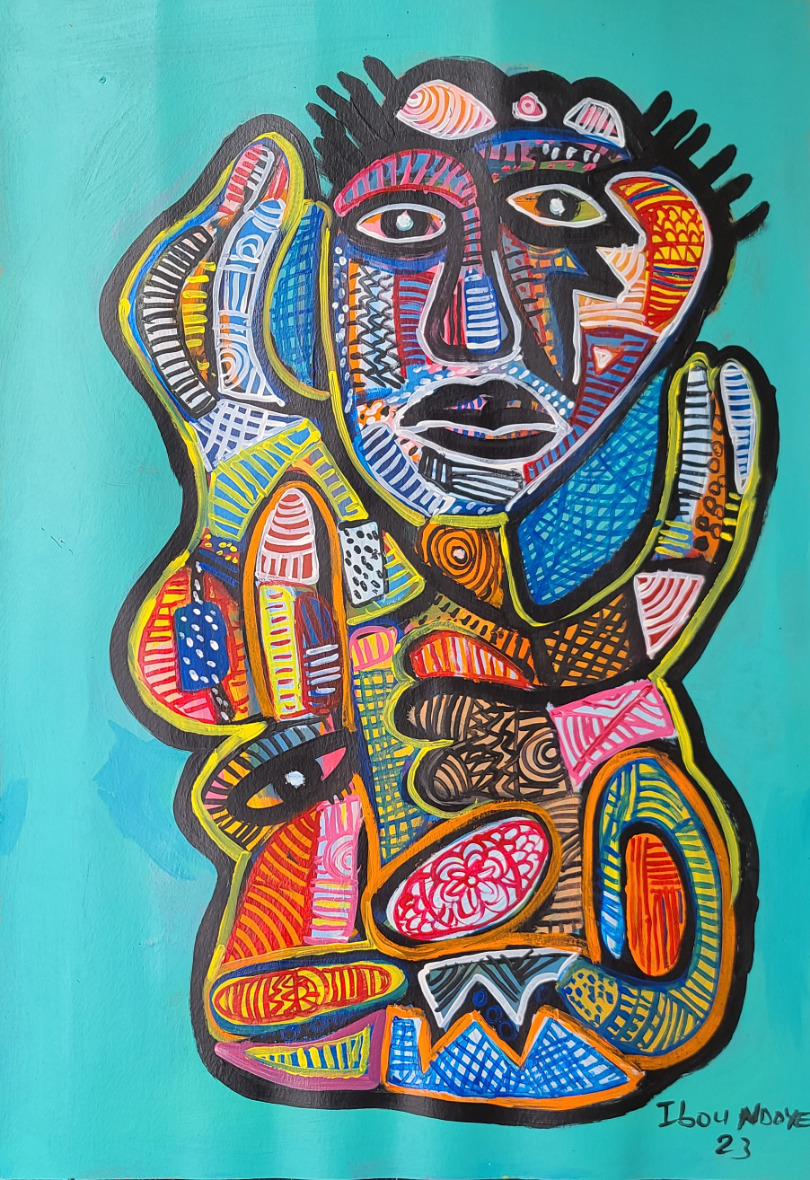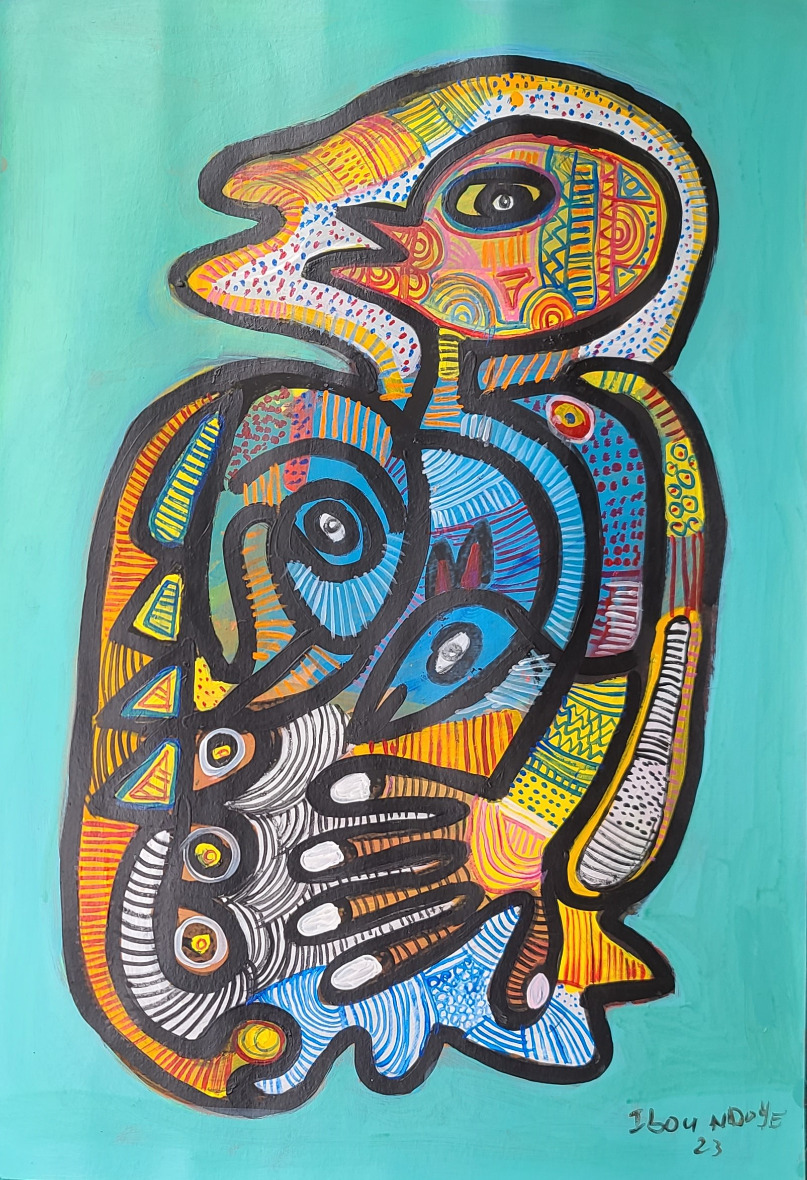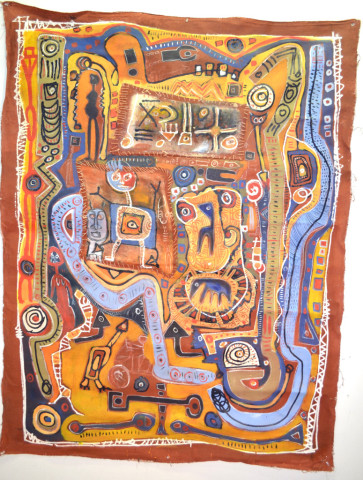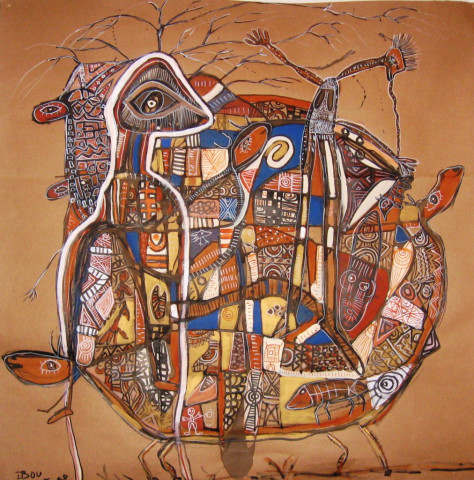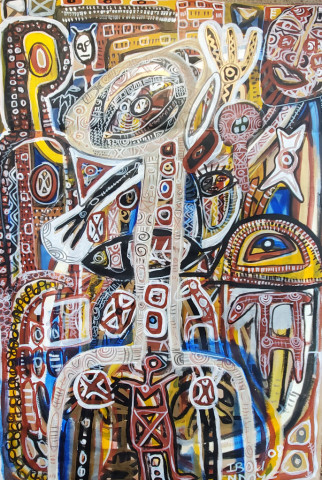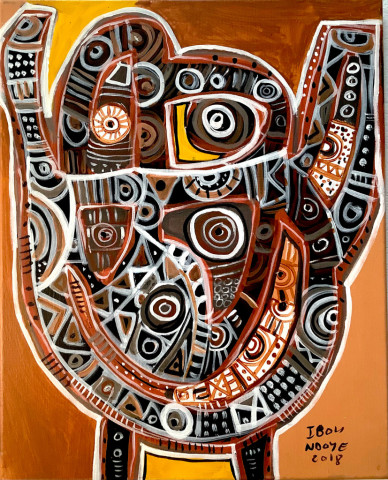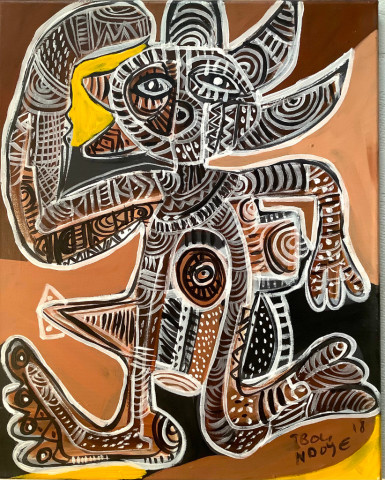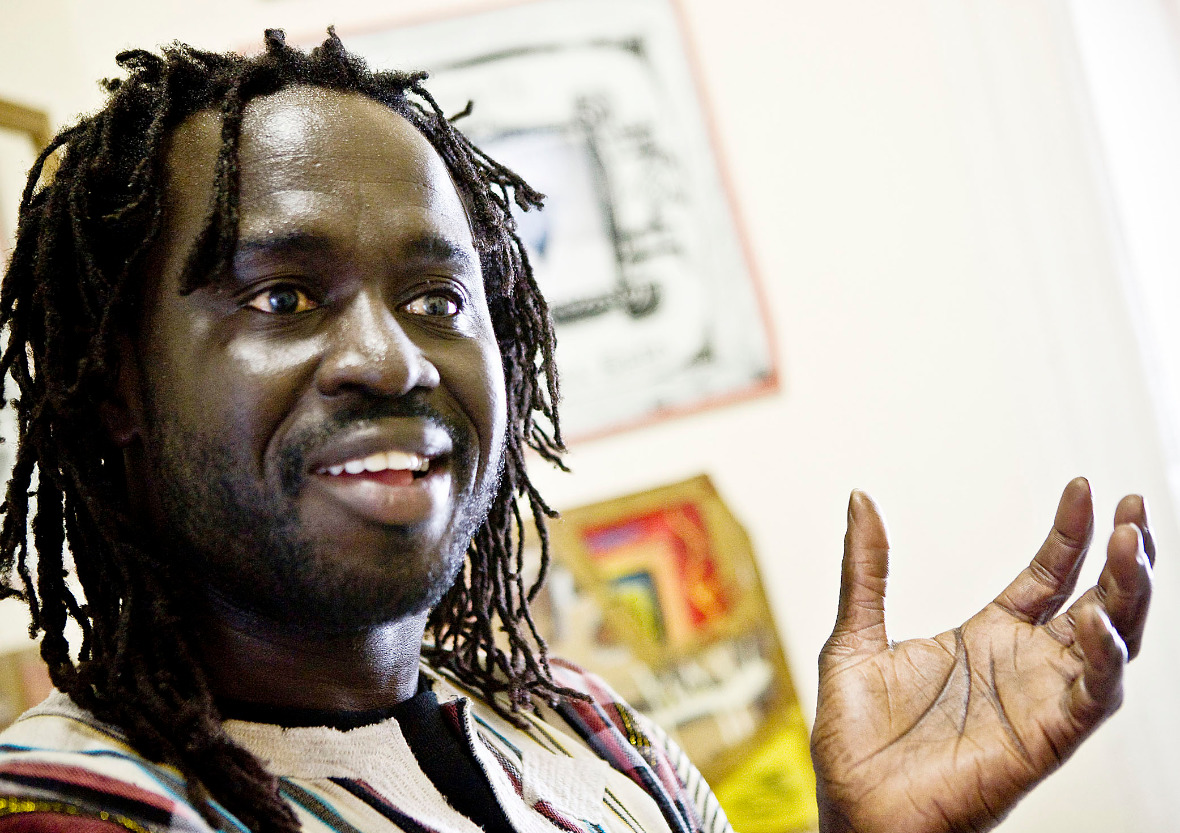
Ibou Ndoye
Glass-painting
artist
Ibou
Ibrahima
Ndoye
has
combined
modernism
and
traditionalism
to
create
a
style
unique
to
himself.
Ibrahima,
commonly
known
as
"Ibou,"
as
a
young
child,
was
regularly
surrounded
by
colorful
African
textiles
and
fabrics.
It
is
not
surprising
that
Ibou
says
he
"socialized
with
art
and
cohabited
with
colors"
from
a
very
young
age.
Ibou
began
his
career
as
a
painter
in
the
late
1980s
during
a
period
in
his
native
Senegal
called
the
"Set
Setal,"
or
clean-up
movement.
The
movement
encouraged
artists
to
embellish
the
environment
by
expressing
themselves
through
murals
on
buildings
and
walls.
It
was
during
this
time
that
he
painted
several
murals
in
the
suburban
city
of
Pikine.
Some
of
Ibou’s
murals
were
selected
to
appear
in
a
French-produced
documentary
in
1990.
Eventually,
Ibou’s
interests
changed.
Following
a
tradition
brought
from
the
Middle
East
to
Senegal
one
hundred
years
prior,
Ibou
entered
and
renovated
the
world
of
glass
painting.
When
the
technique
was
first
introduced
to
the
Senegalese,
the
subject
matter
was
predominated
by
religious
scenes
–
i.e.,
Abraham’s
sacrifice,
Noah’s
Ark,
Mary
and
Jesus.
It
wasn’t
until
after
Senegal
gained
its
independence
from
its
French
colonizers
(1960)
that
glass
painting
expanded
in
new
directions.
However,
through
the
1980s
only
those
holding
degrees
in
fine
art
dared
to
play
with
the
century-old
tradition.
These
initial
innovators
tended
to
create
images
in
such
a
way
that
the
traditional
style
was
barely
recognizable
through
their
abstractions.
It
was
in
the
early
90s
that
a
third
wave
of
glass
painters
surfaced
in
Dakar.
People,
including
Ibou,
began
to
look
back
at
the
traditional
style
of
their
predecessors
with
a
new
inspiration.
Instead
of
painting
traditional
African
scenes
on
clean
sheets
of
regularly
shaped
glass,
Ibou
started
breaking
and
layering
the
glass
to
create
new
textures
and
effects.
The
incorporation
of
various
other
materials,
including
copper
wire,
broken
bottles,
wood,
bone,
and
animal
skin
began
to
appear
in
Ibou’s
work
as
well.
Later
in
his
life,
upon
relocating
to
America,
he
took
one
step
further
by
mixing
glass
with
plastics
and
other
materials
common
to
our
modern
environment.
It
is
not
unusual
to
find
him
stapling
scraps
of
soda
cans
and
detergent
boxes
onto
vibrantly
painted
CD
cases
portraying
images
of
African
women
carrying
jugs
of
water
above
their
heads.
As
the
times
changed,
so
did
Ibou’s
work,
creating
a
new
style
from
an
old
tradition.
In
the
late
90s,
Ibou
began
exhibiting
his
work
around
Africa
and
Europe
in
local
and
internationally
touring
shows.
The
Biannual
of
African
Art
hosted
in
Dakar
regularly
accepts
Ibou’s
work
for
exhibition
in
a
show
titled
"The
Salon
of
Glass
Painting."
In
1999,
he
expanded
his
involvement
in
Senegal’s
art
scene
when
he
started
running
glass
painting
workshops
at
the
El
Hadji
Doudou
Mbath
Primary
School,
and
later
at
the
Dakar
YMCA.
In
2001,
Ibou
found
himself
on
his
way
to
join
a
friend
in
New
England.
For
several
months,
he
taught
painting
classes
at
Allen
Special
Needs
Camp
for
the
disabled
in
Bedford,
New
Hampshire.
Later
that
year,
Ibou
moved
to
Rhode
Island
where
he
acted
as
an
art
instructor
for
a
program
titled
"Kids
at
Risk"
run
by
the
Urban
Collaborative
Accelerated
Program
(UCAP).
Ibou
also
appeared
as
a
guest
speaker
on
the
Cox
Television
production
"Cultural
Tapestry."
Ibou
presently
resides
in
Jersey
City,
N.J.,
and
regularly
exhibits
his
art
both
locally
and
internationally
in
addition
to
holding
glass
painting
workshops
at
libraries
and
schools.
He
continues
to
promote
and
expand
his
artistic
vision
through
exhibitions,
education
and
global
cultural
exchanges.
For more information please fill out the form below.
(*) - Required field

